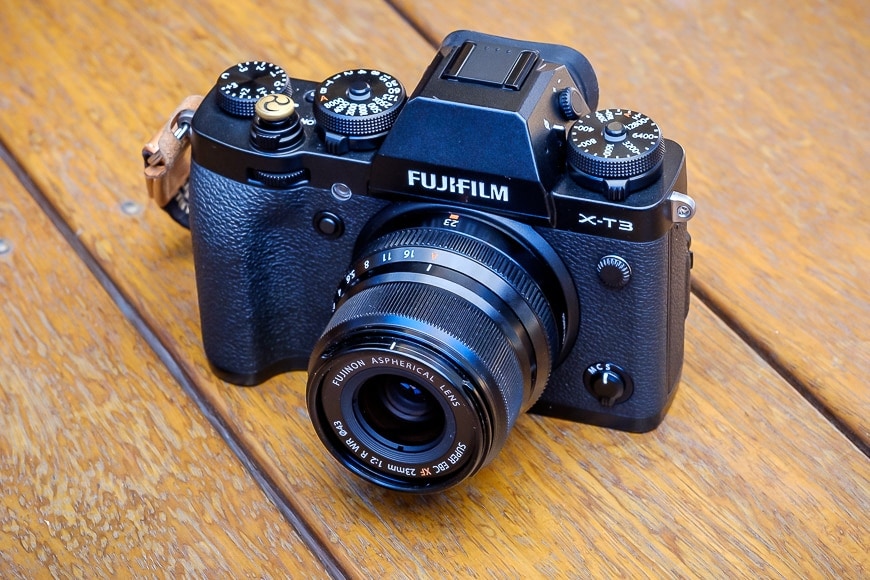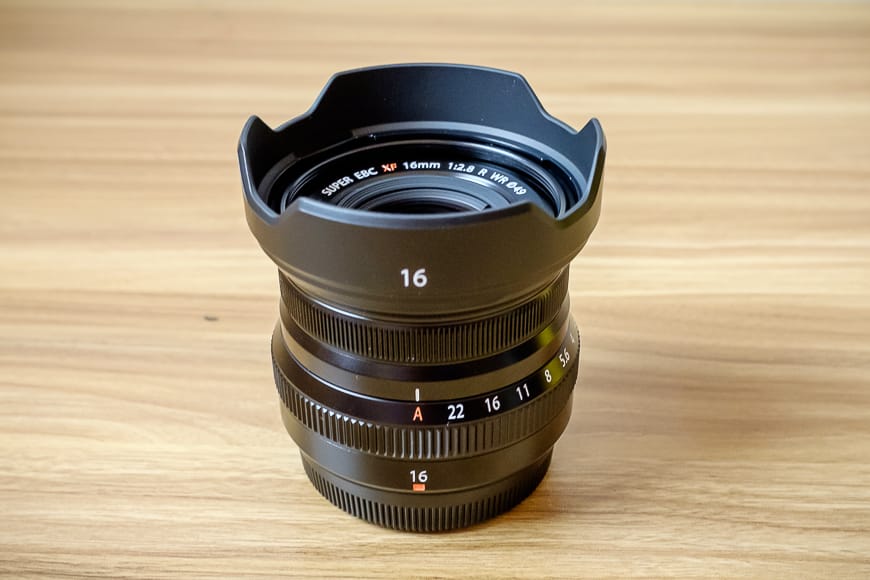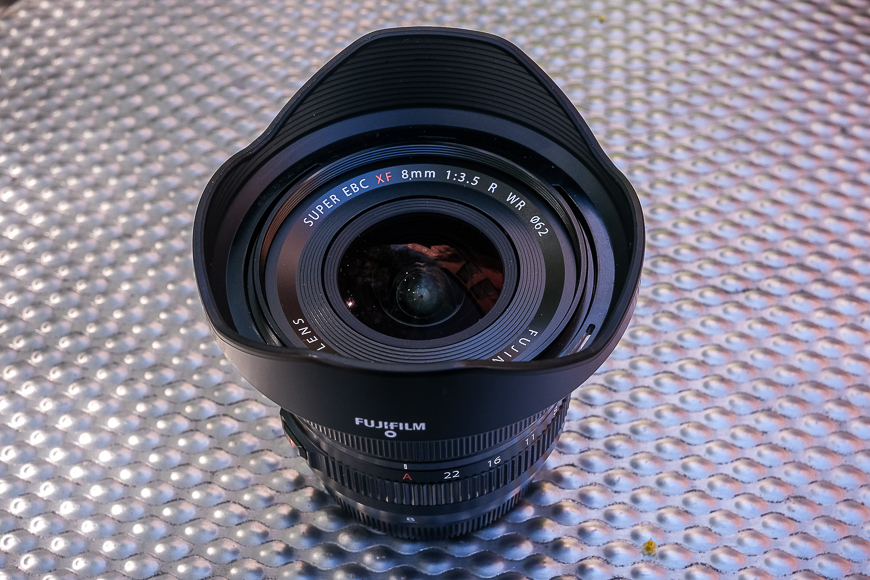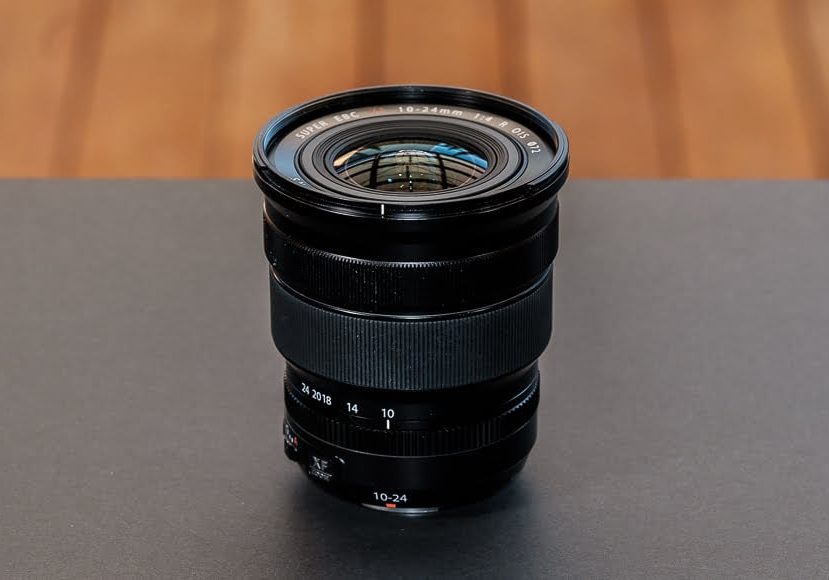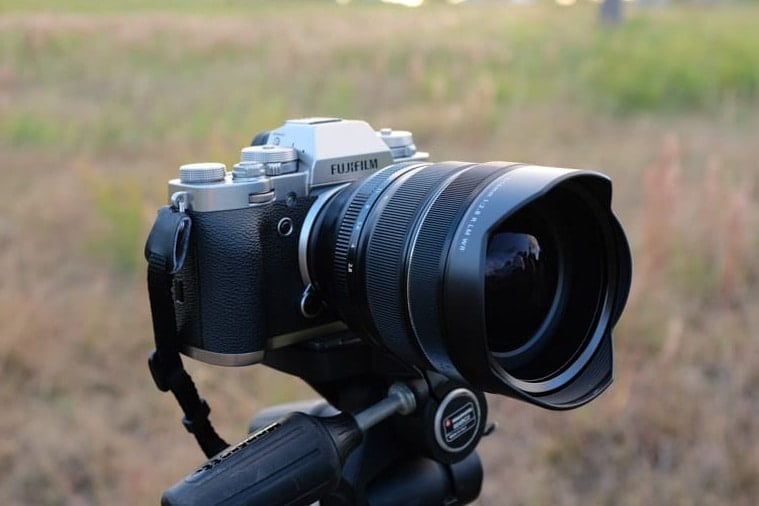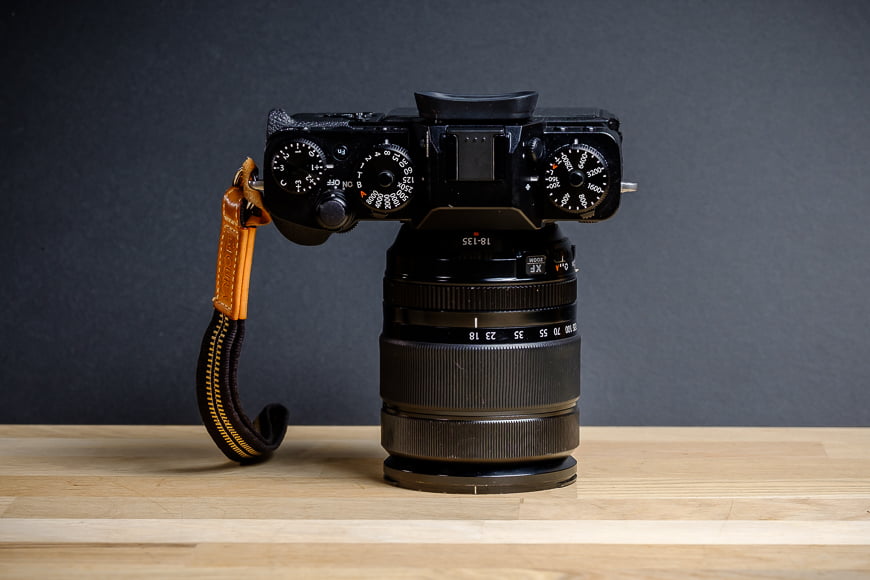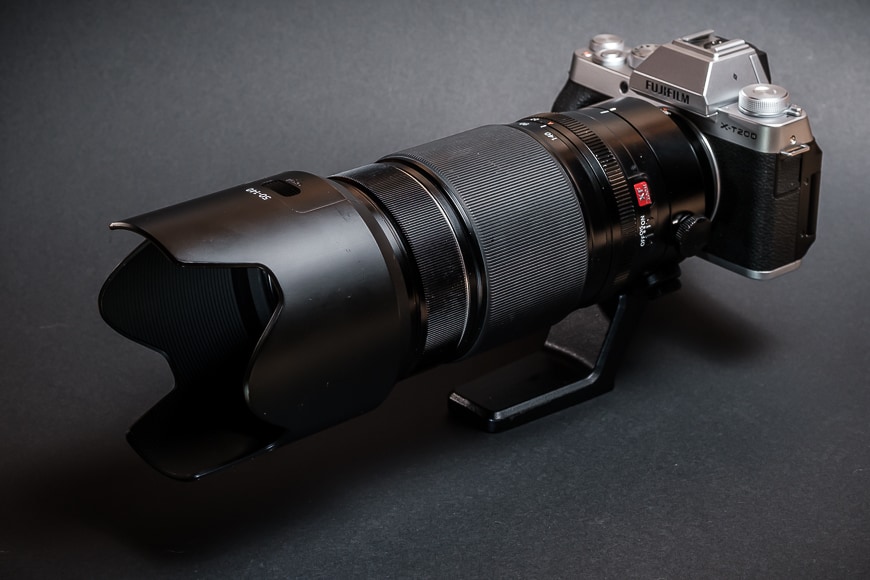
If you’re looking for the ultimate guide to Fujifilm lenses, you’re in the right place!
Fujifilm boasts a long and proud history in the optics and imaging industry—it has been an industry leader for over 90 years.
The Japanese company launched the Fuji X Series in 2011 to usher in a new age of accessible and affordable digital mirrorless cameras and lenses.
HIGHLY RECOMMENDED
Versatile focal length with outstanding optics in a lightweight, compact and weather-sealed body at a great price.
In our latest roundup of the best Fujifilm lenses, we’ll discover the lineup of X-mount lenses and highlight the cream of the crop.
Fujifilm develops optically accurate and sharp prime and zoom lenses designed for photographers of every genre and skill level.
I’ve got a lot to say on the subject, so let’s dive in.
What are the Best Fuji Lenses Today?
At the time of writing this updated guide, there are 44 current Fuji X Series lenses, including primes, zooms, teleconverters, and macro lenses.
That’s not counting earlier generations of popular focal ranges that have since been updated or replaced.
While I could easily list all 44 and have great things to say about each, it’s more productive to highlight the best of the X Series range.
The following lenses represent the best glass the Japanese company develops to support entry-level, enthusiast, and professional photographers.
No matter the genre or budget, Fujifilm offers a lens to suit.
1. Fujifilm XF 23mm f/2 R WR
Style: Standard Prime Lens
Aperture: f/2
Focal Length: 23mm (35mm equivalent)
Dimensions: 60 x 51.9 mm (2.36 x 2.04“)
Weight: 180g (0.39lb)
Fujifilm 23mm f/2 Review
The Fujifilm XF 23mm f/2 is my favorite X Series lens, and I can’t recommend it enough!
The 23mm focal range is a 35mm full-frame equivalent with a 63.4º field of view.
Thanks to its natural field of view, fast aperture, and sharp image quality, it’s the ideal everyday lens.
However, I put the fast little lens to use as a street photography and travel lens.
At f/2, subject separation is well defined, and background blur is pleasing to the eye.
Narrow down the aperture to f/8, and you achieve edge-to-edge sharpness across the entire frame.

Fujifilm XF 23mm f/2 R WR
It’s one of the smallest Fuji lenses in the range, so it’s lightweight and incredibly compact.
Furthermore, the weather-sealed XF 23mm f/2 features fast autofocus performance in any lighting conditions.
Regardless of being paired with a flagship Fuji X-T5 or entry-level X-T30 II, the XF 23mm f/2 is brilliant and keeps the kit minimal.
The lens is available in silver or black to suit the Fuji X Series camera of your choice.
If you’re looking for a lens with a 23mm focal range and a faster maximum aperture, the Fuji XF 23mm f/1.4 is one of the sharpest available.
Its wide f/1.4 aperture, fast linear motor focusing system, and durable build make it a great lens. However, it’s a lot bigger and heavier than its little sibling.
2. Fujifilm XF 16mm f/2.8 R WR
Style: Wide Prime Lens
Aperture: f/2
Focal Length: 16mm (24mm equivalent)
Dimensions: 60 x 45.4mm (2.36 x 1.78 “)
Weight: 155g (0.34lb)
Fujifilm 16mm f/2.8 Review
Fuji’s XF 16mm f/2.8 R WR is a super fun lens. It’s compact, lightweight, and a great all-rounder.
The wide 16mm focal range delivers a 24mm full-frame equivalent and an 83.2º field of view.
What’s most appealing about this lens is its versatile use in various photography genres, including landscape and street photography.
It’s wide enough to gain a nice level of composition context without losing detail to an expansive frame.
Given its size, it also pairs well with older Fuji X Series cameras, such as the X-Pro and X-E models.
As for image quality, the weather-resistant Fujifilm XF 16mm f/2.8 delivers excellent sharpness across the frame, especially from f/4 to f/8.

XF 16mm f/2.8 R WR
When shooting wide-open at f/2.8, subject separation is well-defined, and background blur is pleasing.
While the XF 16mm f/1.4 WR is one of Fuji’s oldest lenses, it delivers a wider maximum aperture and exceptional image sharpness.
However, its autofocus performance isn’t on par with newer Fuji lenses.
3. Fujifilm XF 18mm f/1.4 R LM WR
Style: Wide Prime Lens
Aperture: f/1.4
Focal Length: 18mm (27mm equivalent)
Dimensions: 66.8 x 75.6mm (2.63 x 2.97“)
Weight: 370g (0.81lb)
Fujifilm 18mm f/1.4 Review
The Fujifilm XF 18mm f/1.4 R LM WR is an exceptionally sharp, fast, wide-angle prime lens.
Released in 2021, the new 18mm f/1.4 lens superseded the original XF 18mm f/2, which launched with the X-Pro1 in 2012.
The 18mm focal range delivers a much sought-after 24mm full-frame equivalent with a 76.5º field of view.
It’s a triple-threat lens thanks to its f/1.4 maximum aperture, optical sharpness, and quick linear-motor autofocus system.
An 18mm focal range is ideal for a wide range of genres, from landscape and astrophotography to architecture and street photography.
The weather-sealed lens is compact and lightweight and balances well on any Fuji X Series camera body.

Fujifilm XF 18mm f/1.4 R LM WR
The wide prime’s standout feature is its fast f/1.4 maximum aperture, which delivers excellent subject separation, background blur, and depth of field.
With a 20cm minimum focus distance, you can get in super-close to subjects for dynamic wide-angle compositions.
As for the original XF 18mm f/2, it’s now over a decade old, and its slow autofocus is annoying—however, it’s still one of the sharpest wide primes on offer.
It’s a Fuji classic that holds up and pairs well with older Fuji X Series cameras, such as the X-Pro range.
4. Fujifilm XF 8mm f/3.5 R WR
Style: Ultra-Wide Prime Lens
Aperture: f/3.5
Focal Length: 8mm (12mm equivalent)
Dimensions: 68 x 52.8mm (2.67 x 2.07 “)
Weight: 215g (0.47lb)
Fujifilm 8mm f/3.5 Review
The Fujifilm XF 8mm f/3.5 is the widest prime lens in the Fuji X Series range.
It’s a relatively new entry in the series and offers landscape, architecture, and creative photographers the opportunity to capture extreme compositions.
The weather-sealed 8mm lens offers a 12mm full-frame equivalent focal range ideal for capturing wide-angle shots in any situation.
Ultra-wide primes are prone to distortion and lens flare caused by sunlight.
However, the Fuji 8mm ultra-wide prime is optically accurate and delivers aberration-free photos.
Its 121º field of view captures a stunning amount of the vista – and your feet if you’re not careful.
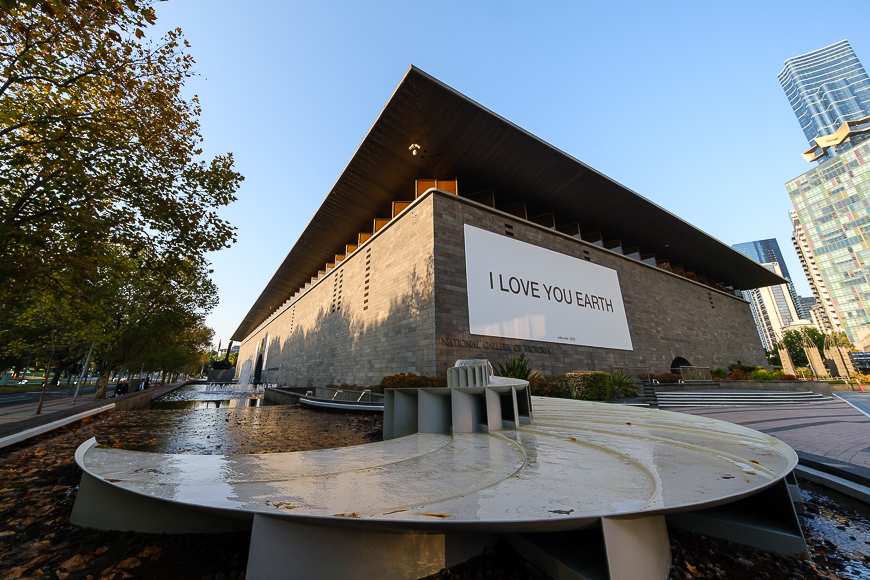
Fujifilm XF 8mm f/3.5 R WR
A word of warning: Be mindful of the sun’s location when framing composition to avoid excessive lens flare or highlights.
The f/3.5 maximum aperture is well suited to landscape and architecture genres and astrophotography opportunities.
It’s robust, lightweight, and compact and includes a wide-flaring lens hood to block excessive outdoor sunlight.
While not as wide, the XF 14mm f/2.8 R wide-angle lens is an excellent alternative. However, it’s an older lens with slower autofocus.
5. Fujifilm XF 27mm f/2.8 R WR
Style: Standard Prime Lens
Aperture: f/2.8
Focal Length: 27mm (41mm equivalent)
Dimensions: 62 x 23mm (2.44 x 0.96“)
Weight: 84g (0.18lb)
Fujifilm 27mm f/2.8 Review
If you thought the XF 23mm f/2 was small, be prepared to witness the tiny Fujifilm XF 27mm f/2.8 R WR.
The truly compact prime lens is the second iteration of Fuji’s 27mm pancake prime.
It was released alongside the Fujifilm X-E4 and instantly caught my eye as an ideal compact street kit. I snapped up both immediately!
The current 27mm f/2.8 offers excellent image sharpness, precise aperture control, and quick focusing in a weather-sealed body.
27mm delivers a 55.5º angle of view and a 41mm full-frame equivalent focal range.
When I say that the Fuji 27mm is compact, I mean it’s the smallest and lightest lens in the entire range.
At just 23mm thick and weighing 84g, it’s a pocketable everyday carry lens ideal for family activities and travel.

XF 27mm f/2.8 R WR
Aside from its astounding size, the lens outputs sharp, distortion-free images throughout the aperture range.
When paired with a Fuji X Series camera, such as an X-T5, the combined kit looks more like a film camera than a current-gen digital one.
If you’re looking for an alternative compact prime lens, the XF 23mm f/2 or XF 35mm f/2 are ideal.
6. Fujifilm XF 35mm f/2 R WR
Style: Standard Prime Lens
Aperture: f/2
Focal Length: 35mm (53mm equivalent)
Dimensions: 60 x 45.9mm (2.36 x 1.8“)
Weight: 170g (0.37lb)
Towards the end of 2015, Fuji embarked on a journey to deliver greater choice and creative freedom to X Series photographers.
The Fujifilm XF 35mm f/2 R WR compact prime lens was the first release in a series referred to as Fujicron.
As a compact and lightweight prime lens, it offered a 53mm full-frame equivalent focal range, sharp optics, and a wide maximum f/2 aperture.
Fuji already offered a popular 35mm f/1.4 prime lens, but it wanted to offer a more accessible and affordable option.
The 35mm f/2 was soon followed by the XF 23mm f/2, 50mm f/2, and later the wider 16mm f/2.8.
These compact primes are smaller, lighter, and cheaper than the enthusiast-level X Series primes.

XF 35mm f/2 R WR
The 35mm f/2 is also available in silver or black, and the silver model looks impressive on a silver X-T5.
The weather-sealed 35mm offers fast focus performance, excellent image quality, and great depth of field wide open.
It’s another excellent choice for travel, street or everyday photography adventures.
The Fuji XF 35mm f/1.4 is still listed as an available lens and is an excellent choice for those looking for a wider aperture.
7. Fujifilm XF 56mm f/1.2 R WR
Style: Telephoto Prime Lens
Aperture: f/1.2
Focal Length: 56mm (85mm equivalent)
Dimensions: 79.4 x 76mm (3.12 x 2.99“)
Weight: 445g (0.97lb)
Fujifilm 56mm f/1.2 Review
The Fujifilm XF 56mm f/1.2 R WR is one of the sharpest X Series lenses ever and is ideal for portrait photographers.
The XF 56mm f/1.2 is a popular focal range for portraiture thanks to its 85mm full-frame equivalent and tighter 28.5º field of view.
The R WR version of the lens is Fuji’s third generation of optically brilliant long primes with a 56mm focal range.
The original XF 56mm f/1.2 (released in 2014) was equally sharp; however, being one of the earliest Fuji lenses, it offered sluggish autofocus.
Later, the same year, Fuji released a second 56mm lens with the XF 56mm f/1.2 APD.
It offered an altered lens configuration with an Apodization filter to create a creamier background blur ideal for portraits.
The latest gen 56mm f/1.2 offers a solid weather-sealed body, impressive autofocus performance, and some of the sharpest images you’ll see in any lens from any brand.

XF 56mm f/1.2 R WR
The wide f/1.2 maximum aperture offers superior low-light performance and appealing subject separation, making it ideal for headshots and portraits.
I’ve shot with each of the XF 56mm f/1.2 lenses Fuji has offered over the years and this one is the best yet!
Because it’s such a high-quality portrait lens, it’s more expensive than the user-friendly Fuji XF 50mm f/2.
Alternatively, if you’re looking for an even wider max aperture, the Fuji XF 50mm f/1 R WR is divine!
At f/1, subject sharpness, definition, background blur, and bokeh are unparalleled.
8. Fujifilm XF 80mm f/2.8 R LM OIS WR Macro
Style: Telephoto Macro Lens
Aperture: f/2.8
Focal Length: 80mm (122mm equivalent)
Dimensions: 80 x 130mm (3.15 x 5.11“)
Weight: 750g (1.65lb)
Fujifilm 80mm f/2.8 Macro Review
One of the very first X Series lenses released in 2012 was the XF 60mm f/2.4 R 2:1 Macro lens.
Fuji demonstrated their desire to offer a range of lenses suited to even the most niche genres.
The Fujifilm XF 80mm f/2.8 continues to offer macro photographers essential imaging options to capture exceptional macro images.
While the 80mm is bigger and heavier than the 60mm f/2.4 Macro lens, it delivers a true 1:1 magnification ratio, ideal for enthusiast macro photography.
It’s one of the most optically impressive lenses in the X Series, and with its 120mm full-frame focal range, it’s just as effective as a portrait lens.

XF 80mm f/2.8 R LM OIS WR Macro
Fuji’s XF 80mm f/2.8 features a focus-limiting switch, optical image stabilization, and super-fast linear motor autofocus.
The 25cm minimum focus distance ensures you won’t poke your creepy crawly in the eyes just to get a sharp shot.
You can stand back a bit and frame your shot without disturbing the nature on display.
The fast f/2.8 maximum aperture ensures precise center subject sharpness and highly appealing background effects.
While the XF 60mm f/2.4 Macro is a great alternative, Fuji also offers the XF 30mm f/2.8 R LM WR Macro lens.
It’s far more compact and affordable than the bulkier XF 80mm f/2.8 option.
9. Fujifilm XF 500mm f/5.6 R LM OIS WR
Style: Super-telephoto Prime Lens
Aperture: f/5.6
Focal Length: 500mm (750mm equivalent)
Dimensions: Ø102 mm × 259mm (4.01 x 10.19″)
Weight: 1335g (2.94lb)
Fujifilm 500mm f/5.6 Review
The Fujifilm XF 500mm f/5.6 is a super-telephoto prime ideal for enthusiasts and professional photographers who want to capture sports, wildlife, and birds.
It’s a premium-quality Red Badge lens, known for having one of the most durable and robust builds in the entire X Series lineup.
The weather-sealed XF 500mm boasts an alloy lens barrel with a premium pearl-silver finish—the same as the whopping Fuji XF 200mm f/2. It features 20 weather sealing points, enabling the lens to operate in temperatures as low as -10°C (14°F).
An essential aspect of a sports/wildlife lens is the autofocus performance. With the camera set to continuous zone subject tracking AF, you will spot, point, and lock onto your subjects quickly and confidently.
According to Fujifilm, the 500mm f/5.6 achieves focus in as little as 0.33 seconds.
Its autofocus is incredibly fast, thanks to the linear motor drive system powered by the X series camera body. The lens also features several switches to fine-tune OIS, focus distance, and focus performance while offering customizable function buttons.

Fujifilm X-H2S + XF 500mm f/5.6
Wide open at f/5.6, the lens delivers impressive centre sharpness, sublime subject separation, and a fine line of in-focus elements. As a result, the smooth background blur and bokeh are appealing and allow foreground subjects to pop.
Stopping down to f/8 results in higher sharpening levels towards the corners and edges – it’s certainly a quality optical performer.
The image quality is just as clean in low-light settings, thanks to the camera’s IBIS and lens OIS, which afford slow-speed shooting. We tested the Fujifilm XF 500mm with the flagship Fujifilm X-H2S digital mirrorless camera.
The Red Badge Fujifilm XF 500mm f/5.6 is an incredibly impressive lens that exemplifies Fuji’s optical mastery and delivers class-leading image quality.
10. Fujifilm XF 10-24mm f/4 R OIS WR
Style: Wide Zoom Lens
Aperture: f/4
Focal Length: 10-24mm (15-36mm equivalent)
Dimensions: 77.6 x 87 mm (3.05 x 3.42“)
Weight: 385g (0.84lb)
It’s time to look at some of the best Fuji X Series zoom lenses covering focal ranges from 8mm up to 600mm.
The Fuji XF 10-24mm f/4 R OIS WR wide-angle zoom is one of the most versatile X-mount lenses.
Its 10-24mm APS-C focal range delivers a 15-36mm full-frame equivalent, making it ideally suited to landscape and architecture.
Fuji’s 10-24mm f/4 is one of the most popular lenses among X Series astrophotographers due to its variable field of view and narrower aperture.
Released in 2020, the current generation XF 10-24mm features Optical Image Stabilisation and a weather-sealed body – the original 10-24 wasn’t weatherproof.
The XF 10-24mm f/4 features a flexible wide-angle zoom range, allowing photographers to compose wider shots effortlessly.

XF 10-24mm f/4 R OIS WR
Thanks to the inclusion of OIS, handheld photography is possible even at lower shutter speeds where camera shake could ruin shots.
With a standard 72mm filter thread, landscape photographers can quickly employ ND and Polarizing filters for optimal image quality.
If you’re looking for a wider zoom lens, the optically accurate Fuji Red Badge XF 8-16mm f/2.8 is hard to ignore.
While it’s double the price of the 10-24mm, it delivers exceptional image sharpness and depth of field in any lighting conditions.
11. Fujifilm XF 8-16mm f/2.8 R LM WR
Style: Ultra-Wide Zoom Lens
Aperture: f/2.8
Focal Length: 8-16mm (12-24mm equivalent)
Dimensions: 88 x 121.5mm (3.46 x 4.78“)
Weight: 805g (1.77lb)
Fujifilm 8-16mm f/2.8 Review
The XF 8-16mm f/2.8 R LM WR is one of Fujifilm’s high-end Red Badge lenses. It features weather sealing, an ultra-wide zoom range, and fast, constant maximum apertures of f/2.8.
Thanks to the ultra-wide field of view and fast aperture, it’s an ideal lens for architecture, landscape, and astrophotography.
Fujifilm’s XF 8-16mm delivers incredibly fast and silent focus performance, allowing for optimal use in street and urban environments.
While the ultra-wide zoom doesn’t feature OIS, it’s less essential in a lens of this nature, as most will opt for a tripod for slow shutter wide work.
As a Red Badge lens, image quality is assured, and the lens doesn’t falter in producing optically sharp and distortion-free images in any lighting conditions.
The lens assembly features four aspherical, three extra-low dispersion, and three super ED elements and a Nano-GI coating to eliminate ghosting and flare.
It also boasts a correctional element that adjusts according to the position of the zoom to achieve edge-to-edge sharpness.

Fujifilm XF 8-16mm f/2.8 | Credit: Gul Yildiz
The Fujifilm XF 8-16mm f/2.8 features a fixed, rigid lens hood, which manages lens flare and protects the convex front lens element from scratches and bumps.
It’s a bit annoying that you can’t use native filters on the front element. However, plenty of third-party lens mounts and filter kits are suitable for this lens.
Fujifilm’s ultra-wide XF 8-16mm zoom lens is one of the best options for enthusiast and pro-grade photographers working in landscape, architecture, and astrophotography.
It’s a niche lens that delivers outstanding image quality and performance every single time you take it out of your bag.
12. Fujifilm XF 16-50mm f/2.8-4.8 R LM WR
Style: Standard Zoom Kit Lens
Aperture: f/2.8-4.8
Focal Length: 16-50mm (24-75mm equivalent)
Dimensions: 65 x 61.4mm (2.55 x 2.41“)
Weight: 240g (0.52lb)
Fujifilm 16-50mm f/2.8-4.8 Review
The Fujifilm XF 16-50mm f/2.8-4.8 is the newest kid on the block.
Intended to replace the highly acclaimed XF 18-55mm f/2.8-4 kit lens, the XF 16-50mm is designed to support the demands of the newer 40MP X cameras.
The Fuji XF 16-50mm offers a highly flexible 24-70mm full-frame equivalent focal range.
It’s one of the most versatile lenses in the Fuji X Series range and is the perfect everyday or travel zoom.
At the wide 16mm end, capture landscapes or city scenes with edge-to-edge sharpness. Zoom to 50mm for tighter compression and compositions such as portraiture, food, and products.
While it’s designed to be a kit lens included with most X Series cameras, it’s a stunning choice in its own right.
The original XF 18-55mm f/2.8-4 kit lens was hot-property on the second-hand market as Fuji shooters loved its capabilities.

XF 16-50mm f/2.8-4.8 R LM WR
Its linear motor focusing system delivers lightning-quick performance, especially when using subject detection on a flagship X-T5 or enthusiast-level X-T50.
The f/2.8 maximum aperture produces appealing subject separation and background blur at 16mm.
However, the narrower f/4.8 aperture at the 50mm end isn’t ideal, especially in low-light situations. As a result, it’s hard to recommend as a serious portrait lens.
Fuji missed an opportunity to add OIS for slow shutter speed photography.
A pro-level alternative is the Red Badge Fujifilm XF 16-55mm f/2.8, which delivers next-level image sharpness and performance in any situation.
13. Fujifilm XF 18-135mm f/3.5-5.6 R LM OIS WR
Style: Standard-Telephoto Zoom Kit Lens
Aperture: f/3.5-5.6
Focal Length: 18-135mm (27-206mm equivalent)
Dimensions: 75.7mm x 97.8mm (Wide) / 158mm (Telephoto) (2.97″ x 3.85″ / 6.2″)
Weight: 490g (1.08lb)
Fujifilm 18-135mm f/3.5-5.6 Review
While an 18-50mm kit lens is excellent, what if you need a little more reach?
As with almost every Fujifilm lens, the XF 18-135mm f/3.5-5.6 is built like a tank—you could seriously jack up your car with it.
The weather-sealed beast has an all-metal body, including the aperture and focus rings. The only plastic components appear to be the petal-shaped lens hood and the tiny switches for the OIS and aperture control.
In terms of usability, it’s a good size and weight, especially for an all-in-one lens. This would make for an ideal travel lens as you don’t have to pack any other lenses – you can use it to shoot wide street scenes and zoom in for wildlife.
In good lighting conditions, the Fujifilm XF 18-135mm f/3.5-5.6 R LM OIS WR acquires focus cleanly and accurately. While the older linear motors are not nearly as fast as some newer lenses, they’re still fast enough for everyday use.
It’s important to remember that this is one of Fujifilm’s first big zooms – and yet, it’s still a cracker of a lens today!
In general, Fujifilm makes excellent optically sharp lenses, bright and clear with gorgeous contrast and colour rendering.
While the Fuji XF 18-135mm delivers appealing image quality, it’s not the best performer in any of these categories – it’s not trying to be, given its all-purpose application.

Fujifilm XF 18-135mm f/3.5-5.6 R LM OIS WR
Looking closer at the images, softness occurs at the edges, especially when shot wide open. The centre, however, is optically sharp and crisp with excellent rendered detail.
This is an incredibly flexible and versatile lens that has a lot of benefits that add to its value. It’s one of the best travel options!
The 18-135mm zoom range means this lens can be used for genres such as street, architecture and landscape at the wide end.
At the zoom end, this lens could be used for genres such as sports and wildlife. It makes a perfect single-lens ideal for those who want to travel or spend a day out and about.
Throw in the weather-sealed and robust body, plus the addition of OIS, and you have a compelling product.
At the end of the day, the Fujifilm XF 18-135mm f/3.5-5.6 R LM OIS WR is a good-quality lens with a lot of potential. It just needs a little more work than most Fuji lenses to create brilliant images.
14. Fujifilm XF 50-140mm f/2.8 R LM OIS WR
Style: Telephoto Zoom Lens
Aperture: f/2.8
Focal Length: 50-140mm (76-213mm equivalent)
Dimensions: 82.9 x 175.9mm (3.26 x 6.92“)
Weight: 995g (2.18lb)
Fujifilm 50-140mm f/2.8 Review
As a Fuji photographer and reviewer, I’ve shot with almost every zoom and prime lens in the X Series range.
However, the Fujifilm XF 50-140mm f/2.8 is one of the best lenses I’ve ever shot with.
It’s a bit embarrassing to admit, but I “accidentally” bought the Fuji 50-140mm on a drunken night adventure in Kyoto, Japan.
Putting aside my shameful behavior and credit card debt, it proved to be an incredibly fast and sharp Red Badge zoom lens.
The constant f/2.8 maximum delivers exceptional subject separation and background blur with accurate image sharpness and clarity.
Paired with a flagship Fuji X-T5, the XF 50-140mm f/2.8 is a powerhouse in almost any setting and genre.
The 76-213mm full-frame equivalent focal range is ideal for portraits, products, motorsport, and birding.

XF 50-140mm f/2.8 R LM OIS WR
With Optical Image Stabilization and fast linear motor autofocus, it snaps from subject to subject without hesitation.
While the weather-sealed body is heavier than most lenses, it’s one of the most robust and impressive pieces of optical tech on the market.
With Fuji being Fuji, there’s a fantastic and affordable alternative to the premium XF 50-140mm zoom lens.
The Fujifilm XF 55-200mm f/3.5-4.8 R LM OIS is the unsung hero of the X Series zoom lens range.
The 55-200mm focal range delivers a highly versatile 84-305mm full-frame equivalent ideal for multiple photography disciplines.
At the 55mm wide end, it’s suitable for portraiture and product work. At the 200mm end, the optically image-stabilized lens is well suited to sports and wildlife photography.
15. Fujifilm XF 100-400mm f/4.5-5.6 R LM OIS WR
Style: Super-Telephoto Zoom Lens
Aperture: f/4.5-5.6
Focal Length: 100-400mm (152-608mm equivalent)
Dimensions: 94.8 x 210.5mm Wide/270mm Telephoto (3.73 x8.28” Wide/10.63” Telephoto)
Weight: 1,375 g (3.02lb)
One of the biggest lenses in the Fuji X Series fleet is the XF 100-400mm f/4.5-5.6 R LM OIS WR.
The weather-sealed lens is a beast weighing 1,375g and measuring 94.8 x 270mm when the zoom is extended to 400mm.
With a 200-600mm full-frame equivalent focal length, the super-telephoto zoom is a formidable ally for birding, wildlife, and sports.
The Fujifilm XF 100-400mm f/4.5-5.6 also features Optical Image Stabilization, fast linear motor autofocus, and exceptional image sharpness across the focal range.
The f/4.5-5.6 maximum aperture is ideally suited to super-telephoto work, ensuring image sharpness and subject separation at long distances.
The XF 100-400mm f/4.5-5.6 is also compatible with the pair of Fuji XF Teleconvertor lenses.

Fujifilm XF 100-400mm f/4.5-5.6 R LM OIS WR | Igor Vyvey
The XF 1.4X Teleconverter extends the focal range to 140-560mm with a minimal drop in maximum aperture.
Add the XF 2.0X Teleconverter to the lens, and your focal range will magnify to 200-800mm! However, it comes at the cost of image sharpness and optimal aperture.
Professional Fuji photographers looking for the ultimate zoom lens should look at the monolithic XF 150-600mm f/5.6-8 R LM OIS WR.
It’s big, bold, and beautiful—as are the images captured with this incredible piece of kit!
If you’re looking for something a little cheaper, the XF 80-300mm f/4-5.6 R LM OIS WR telephoto lens is hard to pass up.
It’s also worth noting that the XF 1.4X and XF 2.0X Telecopnverters pair with both these lenses for extended reach.
The Best Lenses For Different Fuji Cameras
As a member of a large Fuji community, I get asked questions about the best Fuji lenses for a particular camera.
Having shot with, tested, and reviewed almost every Fuji X Series camera and lens, it’s easy to know the best lenses to pair with each camera.
Keep reading if you’re looking for a camera and lens combo other than the kit lens that comes in the box.
The recommended pairings below are based on what lenses best complement the camera, its intended user, and the style or genre it’s best suited to.
Of course, any Fuji lens will pair with any Fuji X Mount camera – but some combinations just feel right.
Fujifilm X-T5

Fujifilm X-T5 and XF 56mm f/1.2
The Fujifilm X-T5 is the flagship photography camera developed by the Japanese imaging giant.
It features a 40MP APS-C CMOS X Trans 5 image sensor, X Processor 5, and 5-axis in body image stabilization, delivering an additional 7 stops of light.
The X-T5 also offers fast autofocus performance, targeted subject tracking, and the ability to record 6.2K/30p high-resolution video.
The best lens to pair with the X-T5 is the Fujifilm XF 56mm f/1.2.
The 56mm (85mm full-frame) focal range is ideal for portraiture, food, and product photography.
While the 56mm f/1.2 R WR doesn’t feature OIS, the wide aperture and X-T5 IBIS are more than enough to shoot in low light.
The X-T5 and XF 56mm f/1.2 look and feel good together and deliver outstanding pro-grade images.
Check out our complete guide to the best lenses for the X-T5.
Fujifilm X-T50

Fujifilm X-T50 + XF 16-50mm f/2.8-4.8
When Fujifilm launched the X-T50, it released the new XF 16-50mm f/2.8-4.8 kit lens.
The 16-50mm f/2.8-4.8 is specifically suited to optimize image quality, sharpness, and the autofocus performance of newer 40MP X Series cameras.
As a result, it’s the most accessible, flexible, and affordable lens for the X-T50. Plus, it features the latest and greatest tech from Fuji.
The X-T50 is a perfect Fuji camera for photography enthusiasts looking to optimize their creative output.
The XF 16-50m suits many genres while delivering excellent outcomes.
It’s also a great combo to learn or master photography before moving on to high-grade gear.
I recently reviewed the X-T50 and fell for its Film Simulation Dial and fantastic performance.
Fujifilm X-H2S

The Fujifilm X-H2S is the company’s flagship hybrid photography and videography digital mirrorless camera.
While it captures incredible image quality, it’s the best Fuji camera for pro-grade video recording.
The X-H2S features a 26MP X-Trans CMOS 5 HS image sensor, fast X Processor 5, In Body Image Stabilization, and Digital Stabilization for video.
It also boasts a larger and deeper grip than any other Fuji X Series camera. As a result, it’s excellent for shooting with larger Fuji zooms.
A premium, high-spec camera like the X-H2S pairs perfectly with the Red Badge Fuji XF 16-55mm f/2.8.
While the combo is heavier and bulkier than most, its performance and image quality are second to none.
Fujifilm X-S20

Fujifilm’s X-S20 is another hybrid video and photography camera ideal for vlogging.
The X-S20 houses a 26.1MP X-Trans CMOS 4 image sensor and fast X Processor 5 driving the 5-axis image stabilization, delivering up to 7 stops of light.
Videographers and vloggers love the 6.2K 30p and 4K 60p video performance.
Like the X-H2S, the X-S20 features a deeper grip that allows for added comfort and control.
One of the best Fuji lenses for vlogging is the lightweight XF 16mm f/2.8 R WR.
The combined weight of the camera and 16mm lens is 646g (1.42lb), making it an ideal kit for handheld vlogging or with a gimbal.
Be sure to read our full X-S20 review.
Advice From The Pros: The Best Fuji Lens For The Job
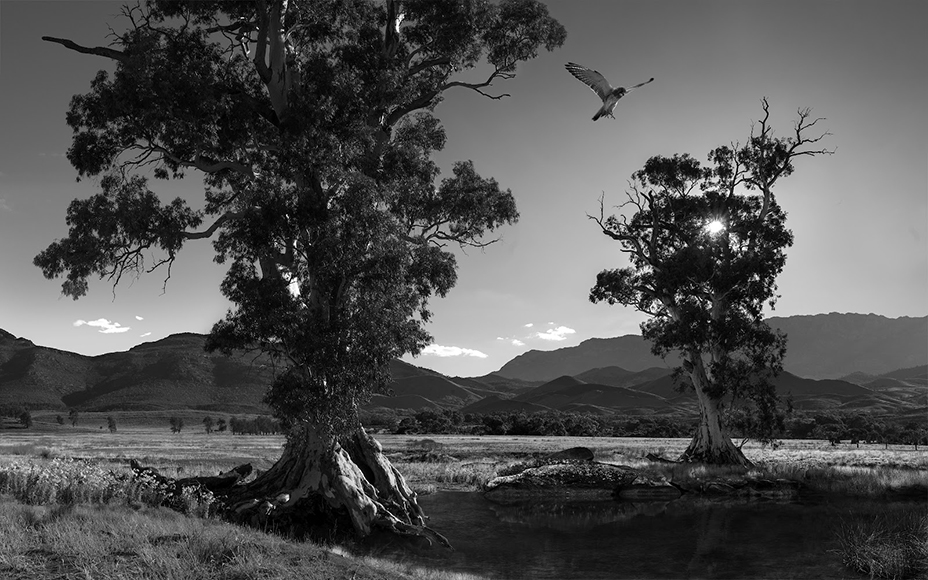
Image Credit: Two Trees by Gary Heery using a Fujifilm GF 32-64mm lens
Fujifilm cameras and lenses aren’t just for entry-level and enthusiast photographers.
More and more pro photographers are turning to Fujifilm to meet and exceed their creative and commercial needs.
We chatted with several pro photographers to get their advice on selecting the right Fujifilm lens for the job.
Portrait photography
“Zoom lenses will always be my go-to, with most of my shots being taken between 70-100mm on the GF45-100mm f/4 R LM OIS WR as it means images are cropped and at their most flattering. It also means the subject can be captured from a distance, and there is a strong sense of intimacy, particularly when used in conjunction with a tripod,” says Gary Heery, Fujifilm X-Photographer.
Andrew Hall, another Fujifilm X-Photographer, says he prefers primes for portraits. “It’s always good to start with a plan of what you’re hoping to achieve in any shoot, including what style of photography you like, the desired size and speed of the lens, and, of course, the budget!
“For portrait photography, I prefer a prime lens such as the XF 90mm f/2.0 because of its sharpness and bokeh,” he says.
Fast-moving photography
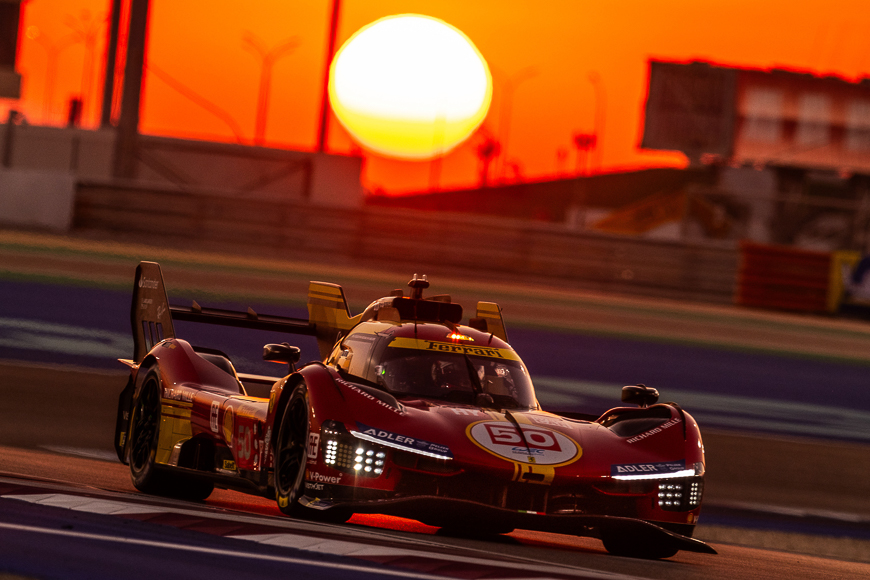
Fujifilm X-H2 | Fujifilm XF 200mm f/2 + 1.4x Teleconverter | Velvia Film Simulation | Andrew Hall
Says Andrew Hall: “Finding a lens that can keep up with the stealth and speed required to capture fast-moving objects can prove challenging. When it comes to action photography, the XF 100-400mm and XF 70-300mm are always with me as they are renowned for their sharpness and clarity.
“However, my current favorite lens for any racetrack action is the new FUJINON XF 150-600mm lens, as it provides extra reach and is razor-sharp throughout the zoom range.
“Not only this, but the zoom function in the XF 150-600mm lens is internal, meaning the balance of the lens stays the same throughout the zoom range, which is a definite advantage at longer focal lengths,” he says.
Landscape Photography
Says Gary Heery, “Many photographers tend to lean toward a zoom lens when shooting landscape photography as it means there is a bit more versatility on a shoot. One of the limitations of a prime lens is that the only way to zoom in and out is to move to the ideal location for the frame.
That’s why I like to use the XF 100-200mm f/4.5-5.6 R LM OIS WR however I am usually using shorter focal lengths as I prefer the intimacy it creates.”
“When I’m out shooting landscape photography, I tend to reach for a wide-angle zoom lens such as the XF 10-24mm zoom,” says Hall. “However, I also use the new XF 18mm f/1.4 interchangeably.”
“When it all comes down to it, it’s up to the preferred aesthetic of each photographer as to what lens should be used, but hopefully, photographers can feel more equipped with additional context and knowledge to make the best decision for themselves,” he adds.
How To Choose The Right Fuji Lens For You
Before you rush out and buy every lens we’ve recommended, stop and consider the style and genre of photography you want to explore the most.
I’m a big advocate for using the lens you already have in your kit rather than instantly searching for the perfect one for the job.
However, there’s a method to my madness, and I’ve provided some simple steps below to help you make the right choice.
Baby Steps

As a beginner, it’s far better to make the most of the lenses already in your camera bag, even if that lens is the older 18-55mm f/2.8-4 kit lens or the new 16-50mm f/2.8-4.8 zoom.
Speaking of kit lenses, it’s the perfect place to begin your exploration of Fujifilm lenses.
Especially since most Fujifilm X Series cameras are available as a kit – depending on your region.
I recommend you work with the 16-50mm kit lens to explore as many photography genres as possible.
Shoot landscapes and city views at the wide 16mm end with a range of apertures. Then zoom in close at 50mm and capture portraits, products, pets, and food.
Take photos in every room of your home regardless of the lighting conditions.
Review your photos and understand what focal length and aperture you prefer to shoot with.
You may prefer the look, feel, and outcomes of the photos captured at 16mm with an aperture of f/2.8.
Or it could be that you sometimes wished you had something wider to capture more of the scene.
Considering these factors, a wider zoom lens, such as the XF 10-24mm f/4 or the XF 8-16mm f/2.8, is worth investing in.
Walk Before You Run

Apply the same principle if you would prefer a single-focal-distance or prime lens after extensive use of the 16-50mm kit lens.
First, get out and take lots of photos of the things you love the most. Review your images to discover your most used focal length and aperture.
Consider whether you’re happy with the compositions and recall whether you zoomed in or out with your feet to get the framing right.
Upon review, you may discover that you prefer the 50mm focal distance; however, you would love a wider maximum aperture.
If that’s the case, try out the Fuji XF 50mm f/2 or the enthusiast-level XF 56mm f/1.2.
Watch Where You Step

My final advice on selecting and buying Fuji XF lenses is to take your time.
In the past, I’ve suffered extensively from GAS (Gear Acquisition Syndrome) and FOMO (Fear Of Missing Out), which resulted in me buying up Fuji lenses to have a lens for every occasion.
It’s an expensive and stressful trap! Today, I have a ‘less is more’ philosophy and work with a very minimal Fuji lens kit.
Move on from the kit lens, but not before getting the most out of it first.
With your next lens, apply the same principles of making it work in as many genres as possible to master any situation.
Don’t be afraid to rent or loan Fuji lenses from camera stores or friends to test them before laying down any more cash.
If you’re looking for a particular Fuji lens to master a specific photography genre, keep reading!
Quick-Fire Lens Choice By Genre

Pick a genre, any genre, and we’ve got a quick-fire Fuji lens recommendation for you!
While there are multiple Fujifilm lens choices for most photography genres, I’ve recommended the best of the bunch.
In saying that, I’ve considered price, performance, features, and potential output.
Astrophotography: The Fujifilm XF 10-24mm f/4 R OIS WR is the best lens for capturing wide expanses of the sky and the galactic core of the Milky Way. Its weather-sealing is perfect for stargazing on cold nights.
Birding: A birding lens must be durable and feature image stabilization, fast focus performance, and super-telephoto reach. The Fujifilm XF 150-600mm f/5.6-8 R LM OIS WR ticks all those boxes while delivering superior image quality.
Motorsport: The Fuji XF 200mm f/2 R LM OIS WR is an ultra-fast super-telephoto prime lens ideally suited to motorsport photography. It’s the biggest and most expensive Fuji lens, and it is also one of the fastest.
Street: As a street photographer, I recommend the XF 23mm f/2 R WR prime lens. It’s compact, lightweight, and incredibly discreet. For its price, it’s also reliable, fast and very sharp.
Weddings & Events: Wedding and event photographers depend on reliable, fast, ultra-sharp lenses that perform in any lighting condition. The Fuji XF 16-55mm f/2.8 R WR is one of the sharpest lenses on the market and ideal for this genre.
Architecture: The Fuji XF 8mm f/3.5 R WR is one of the best lenses for indoor and outdoor architectural photography. It delivers a jaw-dropping view while ensuring image sharpness and distortion-free framing.
Landscape: Landscape is one of the most popular photography genres. Fuji offers many high-quality lenses to suit the genre, but one of the best is the XF 8-16mm R LM WR. It’s optically accurate and produces stunning image quality in any setting.
Headshots/ Portraits: The XF 56mm f/1.2 R WR is arguably one of the sharpest Fuji lenses available. Its telephoto focal range delivers excellent compression, exceptional subject sharpness, gorgeous background blur, and bokeh.
Fashion: The perfect Fuji lens for fashion photography is the XF 50-140mm f/2.8 R LM OIS WR. It features a versatile focal range and is incredibly sharp throughout that range. It’s also a great lens for product shots.
Food: Fuji’s XF 90mm f/2 is another sharp, fast prime lens ideal for food photography. Its 90mm focal range and fast aperture produce tight compressions in any lighting.
Macro: The Fujifilm XF 80mm f/2.8 Macro lens delivers true-to-life close-up shots with a 1:1 magnification ratio. It’s exceptionally sharp and features fast LM autofocus and image stabilization. Try it as a portrait lens, and you’ll be blown away!
Family/Travel: Family photography is often spur of the moment and demands a lightweight, fast, and flexible lens. As a result, the Fuji XF 16-50mm f/2.8-4.8 is perfect for this genre as it’s optically sharp and has lightning-fast focus performance.
How To Read A Fujifilm Lens
All brands rely on acronyms and abbreviations to detail the specifications of each lens.
Below is a glossary of terms to simplify reading a Fuji lens. These terms often appear on the box and the front of each lens.
Getting to know them means you can assess a lens’s qualities and special features at a glance.

XF – Fuji lens series featuring the X Mount for Fujifilm interchangeable lens cameras.
#mm – Focal range is represented in millimeters. Prime lenses list a single focal range, and zoom lenses list the minimum and maximum focal range, for example, 10-24mm.
F – The number following the F represents the lens’s maximum aperture. Prime lenses and zooms with a constant max aperture list a single value such as f/2.8.
R – Lenses marked R feature an aperture ring to control the internal lens aperture opens.
WR – The weather-resistant lens features sealing to keep moisture and dust out.
OIS – Optical Image Stabilisation prevents blurry images caused by lens movement.
LM – Linear Motor autofocus system is fast, near-silent, and highly responsive.
Super EBC – Super Electron Beam Coating is a multi-layer lens coating that minimizes flare and ghosting.
Fujinon Aspherical Lens – An aspherical lens directs the rays of light from all its points to a central point for optimal image sharpness.
⌀## – The filter thread diameter is located at the front of the lens.
Are Fujifilm Lenses Expensive?
As with any high-quality photography equipment, value for money and budget limitations impact what appears on our wishlist and what makes it into our kit.
Fuji lenses are exceptionally well built, made from durable materials, and feature some of the industry’s sharpest and most accurate optics.
Ninety years of experience developing glass lenses tends to make you an expert.
However, it’s essential to understand the cost of a Fuji lens based on the quality of its optics and range of features.
Pro-Level Fuji Lens Kits

Professional and enthusiast photographers looking for the best lens for the job have much to celebrate.
Of course, premium-quality lenses, such as the Red Badge XF zooms, come with a premium price tag.
For example, the Fuji XF 50-140mm f/2.8 retails for around US$1,600, and the stunningly sharp XF 16-55mm f/2.8 retails for US$1,200.
These lenses are ideal for professional wedding and event photographers looking for a dual-zoom kit. Pros in this genre often shoot with two X Series camera bodies.
This pro-level lens combo is an exceptional value for around US$2,800.
Entry-Level Fuji Lens Kits
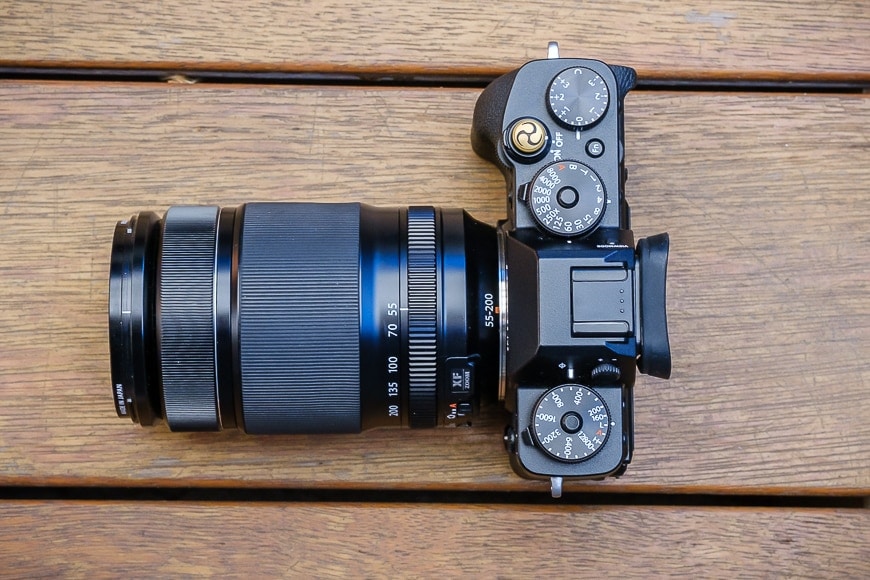
However, not everyone can afford a pair of pro-grade Fuji XF Red Badge zooms at that price.
Fortunately, Fuji’s focus on making photography accessible means that there’s an affordable alternative for every pro-grade lens.
For example, the Fujifilm XF 55-200mm f/3.5-4.8 retails for around US$650, and the new kit XF 16-50mm f/2.8-4.8 retails for around US$870.
The pair costs around US$1,500 and offers almost identical focal ranges and excellent performance to the above pro-kit.
Fuji XF Lens Pricing
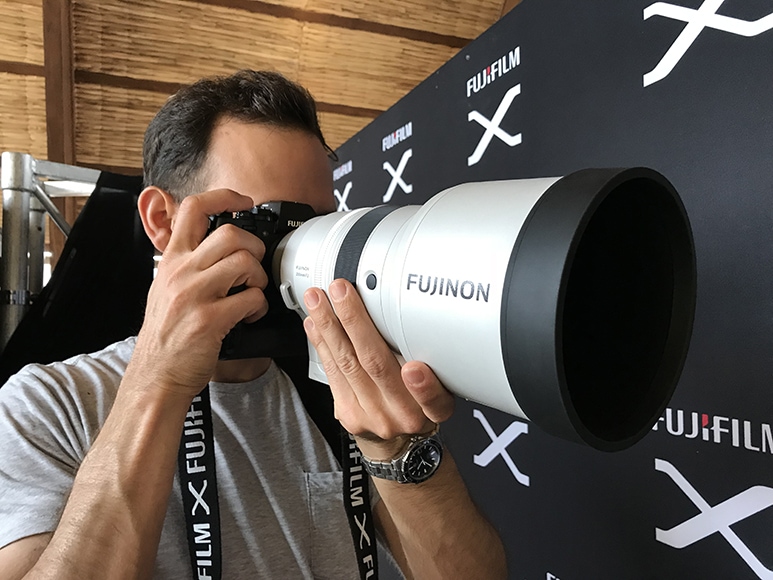
As for the cheapest Fuji XF lens, that award goes to the XF 35mm f/2, retailing for around US$400.
Fuji also offers an XC 35mm f/2 for under $270. The XC lenses feature plastic bodies and lens mounts and are kit lens alternatives for entry-level X Series cameras.
At the other end of the price chart, the Fujifilm XF 200mm f/2 R LM OIS WR and XF 1.4x Teleconverter retail for a staggering US$5,500.
It’s one of the most incredible lenses I’ve ever seen and delivers exceptional image quality and performance suited to motorsports.
The runner-up prize for the most expensive Fuji lens goes to the Fuji XF 150-600mm f/5.6-8, which costs around $2,400.
It’s also worth noting that Fuji makes a pair of professional cine lenses with the same X-mount as the XF series.
The MKX 50-135MM T2.9 and the MKX 18-55MM T2.9 retail for around US$4,300 each.
How Big Are Fujifilm Lenses?
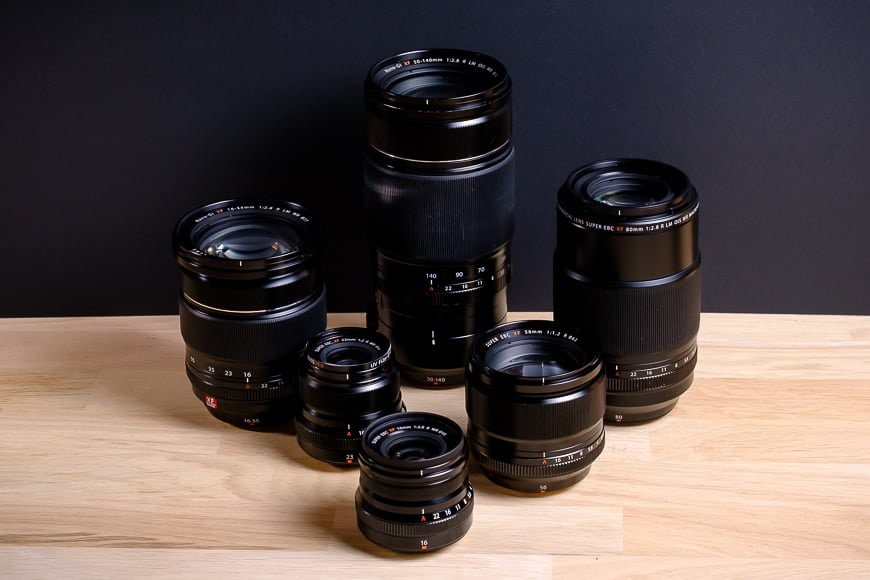
One of the standout features of Fuji lenses and Fuji X Series Cameras is their compact size and durable build qualities.
Of course, the higher-priced pro-grade XF lenses are often heavier and bulkier than the more affordable options.
The Fujifilm XF 50mm f/1 professional portrait lens weighs 845g (1.86lb) and measures 87 × 103.5mm (3.42 x 4.07”). It also retails for around US$1,700.
However, the Fuji XF 50mm f/2 is an optically sharp and fast-focus lens weighing just 200g (0.44lb) and measures 60 x 59.4mm (2.36 x 2.34”). It retails for around US$470.
The smallest Fuji XF lens in the range is the pocketable XF 27mm f/2.8 R WR pancake lens. It weighs a remarkable (or unremarkable) 80g (0.18lb) and measures 62 x 23mm (2.44 x 0.91”).
For comparison, the beastly XF 200mm f/2 R LM OIS WR weighs over 28 times the 27mm!
It’s the heaviest XF lens, weighing 2,265g (4.99lb), and measures 122 x 205.5mm (4.8 x 8.09”) with a 105mm filter thread.
The longest Fuji XF lens is the whopping XF 150-600mm f/5.6-8, which measures 99 x 314.5mm (3.9 x 12.38”).
It’s also important to consider the size and weight of Fuji lenses compared to other brands.
How Do Fuji Lenses Compare To Other Brands?

Years ago, I switched from a Canon DSLR to a Fuji X mount because I found the Canon gear too heavy—it was killing my joy of photography.
The Canon RF 35mm f/1.4L VCM prime lens weighs 555g (1.22lb) and measures 76.5 x 99.3mm (3.01 x 3.91”).
Sony’s FE 35mm f/1.4 GM weighs 524g (1.2lb) and measures 76 x 96mm (3 x 3.8”).
The Fuji XF 23mm f/1.4 (35mm full-frame equivalent) weighs 375g (0.83lb) and measures 67 x 77.8mm (2.64 x 3.06”).
There’s also a price difference of over US$670, with the Fuji being the cheaper option.
While it may not sound like the Canon or Sony options are much bigger or heavier, carrying four to five lenses adds up.
I prefer Fujifilm prime lenses over zooms, so I have several fast, lightweight, compact primes in my kit.
My current Fuji X Series photography kit includes the XF 16mm f/2.8, 23mm f/2, 27mm f/2.8 and 50mm f/2.
All four lenses fit neatly into a messenger-style camera bag, and their combined weight is only 585g (1.29lb).
I currently shoot with a Fujifilm X-E4, which weighs 364g (0.8lb) and, paired with the pancake XF 27mm f/2.8, 444g (0.98lb).
It’s plain to see that Fuji lenses are lighter and smaller than equivalent lenses from other brands.
The Best Third-Party Lenses For Fuji X Mount
Given the rising popularity and interest in the Fuji X Series cameras, third-party brands are making hay while the Rising Sun still shines.
Many experienced optics and lens manufacturers offer X-mount lenses that pair seamlessly with the Fuji X cameras.
Leading and renowned optics brands such as Zeiss, Sigma, Tamron, and Samyang continue to develop X-mount lenses.
Competition from third-party lens brands results in greater choice and fairer pricing.
Zeiss Touit 32mm f/1.8

Credit: Amazon.com
I recall walking into a camera store on my first trip to Tokyo and being surprised to see a pair of premium Zeiss lenses in the Fuji cabinet.
Zeiss is a brand typically associated with Leica cameras, given its German origins dating back to 1846!
The Zeiss Touit 32mm f/1.8 and Tout 12mm f/1.2 were developed to pair with the Fuji X and Sony E mounts. Zeiss later added the Touit 50mm f/2.8 to the range.
The Zeiss Touit 32mm f/1.8 is an APS-C format lens offering a 48mm full-frame equivalent focal range.
Unlike many early third-party X-mount lenses, the Touit 32mm boasted quick and responsive direct-control autofocus.
While it’s an older X-mount lens, its optical clarity is excellent, and the fast f/1.8 aperture delivers exceptional exposure control.
Sigma 56mm f/1.4 DC DN Contemporary

Credit: Amazon.com
The Sigma 56mm f/1.4 is a fast and super-sharp portrait lens with an 84mm full-frame focal range.
It delivers tight compression, perfect for headshots, where the fast f/1.4 maximum aperture produces a smooth out-of-focus transition, subject clarity, and background blur.
Sigma’s 56mm isn’t a cheap knock-off of Fuji’s 56mm f/1.2.
Optical purity is assured thanks to a stellar lens configuration that includes a pair of aspherical lenses and a single Special Low Dispersion element.
As a result, distortion, fringing, and aberrations are eliminated while achieving excellent contrast and exposure.
Tamron 150-500mm f/5-6.7 Di III VC VXD

Credit: Amazon.com
It’s great that third-party lens developers aren’t just focusing on compact prime options for X mount.
The Tamron 150-500mm f/5-6.7 is a brilliant example of lens development pushing the boundaries of possibilities.
Harnessing 75 years in optics, Tamrom has created an X-mount lens with a 225-750mm full-frame focal range and exceptional image quality.
The weather-sealed 150-500mm boasts Tamron’s VC Image Stabilization, ideal for sports and wildlife photographers who want to make the most of the extended range.
One of the standout features is the fast and responsive VXD eXtreme-Torque Drive Linear autofocus system.
Despite its capabilities, the Tamrom 150-500mm f/5-6.7 is compact at 93 x 209.9mm (3.7 x 8.3″) and weighs 1.71kg (3.77lb).
Viltrox AF 13mm f/1.4 XF

Credit: Amazon.com
If you’re looking for a third-party X-mount lens for ultra-wide-angle photography, the Viltrox AF 13mm f/1.4 XF is an easy recommendation.
The 20mm full-frame equivalent focal range delivers a wide 94º field of view, making it ideal for landscape and architecture.
The Viltrox AF 13mm f/1.4 boasts a fast, responsive autofocus system and a wide f/1.4 maximum aperture for low-light work.
It’s one of many Viltrox AF lenses available for Fuji X-mount cameras.
You can find out more top picks in this guide: Best Non-Fuji Lenses for Fuji Cameras.
FAQ’s
Are Fuji lenses good?
Fujifilm lenses are renowned for their image sharpness, aberration and distortion correction, and excellent image quality. They’re also robust and durable and will last a lifetime if cared for properly.
What is the best Fuji lens for shooting stars?
The best Fujifilm XF lens for astrophotography is the XF 10-24mm f/4 OIS WR. The weather-sealed and optically stabilized lens delivers a vast field of view and pristine image detail.
Which Fuji lenses have image stabilization?
Optical Image Stabilization is an ideal feature for longer telephoto and super-telephoto lenses. Maintaining a steady shot at slower shutter speeds at longer focal ranges is challenging. Any Fuji lens with OIS in the title will feature optical image stabilization. The category includes the XF 50-140 f/2.8 R LM OIS WR and the XF 80mm f/2.8 R LM OIS WR Macro lens.
What does the R stand for on Fuji lenses?
The R in the Fuji lens title refers to the manual aperture ring. An aperture ring controls the size of the opening within the lens to increase or limit the amount of light passing through to the camera sensor. All Fuji lenses now feature a manual aperture ring for easy exposure control.
What is the difference between Fujifilm XF and XC lenses?
Fuji XC lenses pair with Fuji X Series cameras and feature the same X-mount as XF lenses. However, XC lenses feature simpler, less robust builds and house a plastic X-mount connection. The Fujifilm XC 35mm f/2 is currently the only XC lens on offer.
What are Fuji LM lenses?
LM refers to the type of autofocus drive system installed within the XF lens. LM stands for linear motor and delivers a much faster focusing speed than older lenses. One of the fastest LM lenses is the Fuji XF 16-55mm f/2.8 R LM WR.
What country makes Fujifilm?
Fujifilm is a Japanese company founded in 1934 as the Fuji Photo Film Co. Ltd. The company initially built film manufacturing facilities in the Kanagawa Prefecture, near Tokyo. While many aspects of XF lens manufacturing take place in Japan, the company has facilities in many other countries.
Who are Fujifilm’s competitors?
Fujifilm’s competitors include Canon, Nikon, and Sony. Each holds a substantial market share in the digital camera and lens business. Fuji has continued to expand its range and customer base by offering premium digital photographic equipment.
Who is the target audience of Fujifilm?
Fujifilm’s largest audience is enthusiast photographers looking for a stylish, compact, high-performing digital camera and lens combo for their photographic pursuits. However, Fuji also caters to entry-level and professional photographers.
Which photographers use Fujifilm?
Fujifilm cameras and lenses are enjoyed by a wide range of photographers in every genre and skill level. There’s a Fuji camera and XF lens for every genre, from macrophotography to astrophotography.
What is Fujifilm famous for?
Fujifilm is famous for its 90-year history of manufacturing high-quality film stock, optical lenses, film cameras, and digital cameras and lenses. However, photographers know Fuji for the outstanding color science employed by every X Series camera and lens.
Why I Chose Fujifilm

I’ve been a Fujifilm photographer for over a decade and have loved the brand ever since I switched from Canon.
When I took up digital photography, I was swayed by the promise of exceptional image quality and performance from Canon DSLRs.
Remember that Sony was new to digital mirrorless, and the Fuji X Series was only a couple of years old.
I opted for Canon and spent a lot on L Series lenses, which nearly destroyed my joy of photography.
Within a short time, I was lugging around big, heavy camera bags full of Canon lenses. I began to hate the idea of carting around my kit as I was developing neck and back pain.
I’d almost given up on pursuing photography until a friend and I went on a photowalk in my hometown of Melbourne, Australia.
My friend carried the incredibly portable original Fujifilm X100 with its fixed 23mm f/2 lens.
I was instantly hooked on the idea of a lightweight, portable camera system that was a joy to carry.
Of course, I bought one and soon sold all of my Canon gear to invest in the new Fujifilm X-T1 with the XF 16mm f/1.4 and XF 23 mm f/1.4 primes.
I was carrying two cameras and a pair of lenses without so much as flinching at the weight.
Furthermore, I was impressed by the durability, weather-sealing, and build quality of the two Fuji XF prime lenses.
Regarding image quality, the edge-to-edge sharpness, contrast, level of detail, and low-light performance blew me away.
I took the X-T1 and 16mm and 23mm lenses away on my first trip to Tokyo to document everything I could – they never let me down.
While the autofocus performance of the early XF lenses and X Series cameras left a lot to be desired, it’s fair to say they’ve come a long way.

The Japanese optics company has invested considerably in lens and camera autofocus detection and performance, so it’s competing with the best in the business.
I also find the Fuji XF lens range is excellent value for money, especially when considering some of the affordable variants of popular focal ranges.
I absolutely love the Fujicron compact primes, especially the XF 23mm f/2 and XF 50mm f/2.
The autofocus performance is super-fast for the work I shoot, even when paired with my older Fujifilm X-E4.
The f/2 maximum aperture delivers center sharpness, appealing background effects, and subject separation.
I’ve been out on shoots with the XF 23mm f/2 on my camera and the XF 50mm f/2 or the XF 16mm f/2.8 in my back pants pocket!
I chose Fuji over any other brand because of its portability, performance, styling, color science, and optical quality.
Final Thoughts
Fuji lenses’ quality, durability, performance, and image outcomes represent best-in-class optics.
In a little over a decade, the range of lenses has exponentially increased from three simple primes to over 44 primes, zooms, macro lenses, and teleconverters.
Regardless of your budget, skill level, or preferred genre, there’s a Fujifilm lens perfect for you.
Moreover, pairing the right Fuji lens with any X Series camera opens up a world of creative possibilities thanks to the brand’s exceptional color science and sensor performance.
Fujifilm has a reputation as an innovator in the imaging industry, having made countless technological breakthroughs over the past 90 years.
The XF lens range is yet another example of the Japanese company’s focus on developing high-quality optics for masterful photography.
From the smallest and cheapest to the biggest and boldest, there’s a Fuji XF lens perfect for your next creative pursuit.
HIGHLY RECOMMENDED
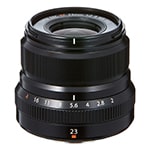
Versatile focal length with outstanding optics in a lightweight, compact and weather-sealed body at a great price.
Credit : Source Post
